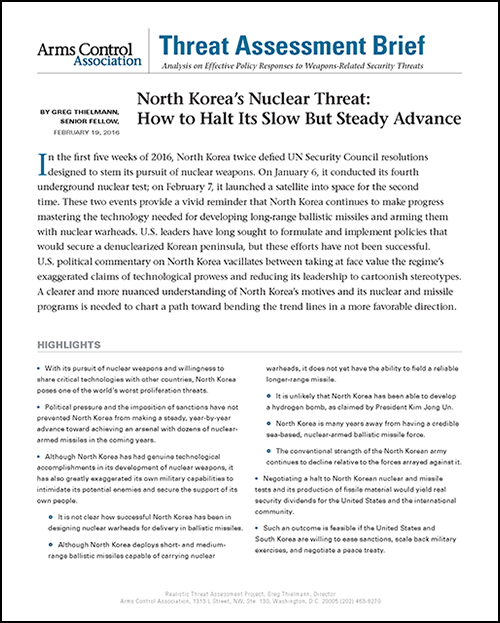By Greg Thielmann
February 2016
 |
| Download PDF |
In the first five weeks of 2016, North Korea twice defied UN Security Council resolutions designed to stem its pursuit of nuclear weapons. On January 6, it conducted its fourth underground nuclear test; on February 7, it launched a satellite into space for the second time. These two events provided a vivid reminder that North Korea continues to make progress mastering the technology needed for developing long-range ballistic missiles and arming them with nuclear warheads.
U.S. leaders have long sought to formulate and implement policies that would secure a denuclearized Korean peninsula, but these efforts have not been successful. U.S. political commentary on North Korea vacillates between taking at face value the regime’s exaggerated claims of technological prowess and reducing its leadership to cartoonish stereotypes.
A clearer understanding of North Korea’s motives and the current status of its nuclear and missile programs can lead to a more realistic strategy for enhancing U.S. security. That strategy would involve using enhanced sanctions as leverage for achieving a halt in North Korea’s nuclear and missile testing and production of fissile material, but this can only happen through negotiations.
